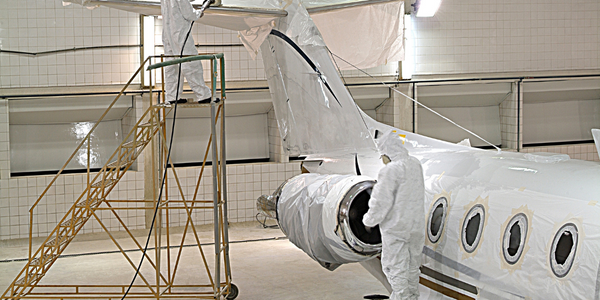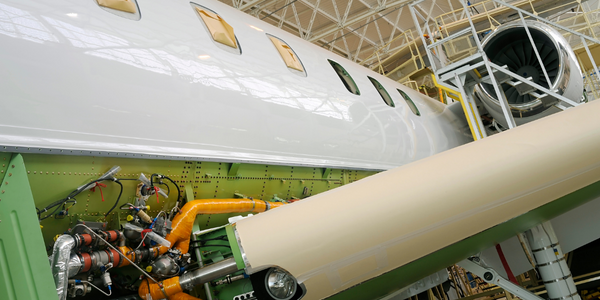技术
- 传感器 - 空气污染传感器
- 传感器 - 环境传感器
适用行业
- 航天
- 医疗保健和医院
用例
- 大规模定制
- 人员跟踪与监控
服务
- 培训
关于客户
加拿大航空是加拿大最大的航空公司,总部位于魁北克省蒙特利尔。它为六大洲提供直接服务,是北美唯一一家获得 Skytrax 四星评级的国际网络运营商。该公司拥有超过 30,000 名员工,并培育了一种将团队成员的社会需求和价值观纳入战略决策的企业文化。这带来了广泛的机会来促进员工参与重要计划和社会事业,包括他们的健康和福祉计划。
挑战
加拿大航空是加拿大最大的航空公司,在 COVID-19 大流行期间面临着重大挑战。航空业受到重创,加拿大航空被迫裁员近50%。这导致剩余员工的焦虑加剧,士气低落,压力增大。这种情况凸显了对全面健康资源的需求,该资源可以为所有团队成员(从一线员工到幕后工作人员)提供实用的指导和支持。现有的健康和保健计划被认为不足以满足当前的需求,需要进行彻底改革。
解决方案
加拿大航空决定修改其健康和保健计划,以更好地满足员工在充满挑战的时期的需求。该公司确定需要一个新技术合作伙伴来为改进后的计划提供支持。他们选择 CoreHealth 是因为它的灵活性和定制功能。加拿大航空的福利经理索博拉·杜伊 (Sobora Duy) 领导了该计划,因为他知道自己将完全控制健康技术平台,以开发能够与组织各个层面产生共鸣的计划。他们的健康计划建立了一个新的标识,名为“释放最好的自己”(UBY),代表该计划的四个健康类别:工作、心理、身体和财务。索博拉和他的团队还投入时间制作视频和社交帖子,以实现联系感并提高项目的成功率。
运营影响
数量效益

Case Study missing?
Start adding your own!
Register with your work email and create a new case study profile for your business.
相关案例.

Case Study
Airbus Soars with Wearable Technology
Building an Airbus aircraft involves complex manufacturing processes consisting of thousands of moving parts. Speed and accuracy are critical to business and competitive advantage. Improvements in both would have high impact on Airbus’ bottom line. Airbus wanted to help operators reduce the complexity of assembling cabin seats and decrease the time required to complete this task.

Case Study
Aircraft Predictive Maintenance and Workflow Optimization
First, aircraft manufacturer have trouble monitoring the health of aircraft systems with health prognostics and deliver predictive maintenance insights. Second, aircraft manufacturer wants a solution that can provide an in-context advisory and align job assignments to match technician experience and expertise.

Case Study
Hospital Inventory Management
The hospital supply chain team is responsible for ensuring that the right medical supplies are readily available to clinicians when and where needed, and to do so in the most efficient manner possible. However, many of the systems and processes in use at the cancer center for supply chain management were not best suited to support these goals. Barcoding technology, a commonly used method for inventory management of medical supplies, is labor intensive, time consuming, does not provide real-time visibility into inventory levels and can be prone to error. Consequently, the lack of accurate and real-time visibility into inventory levels across multiple supply rooms in multiple hospital facilities creates additional inefficiency in the system causing over-ordering, hoarding, and wasted supplies. Other sources of waste and cost were also identified as candidates for improvement. Existing systems and processes did not provide adequate security for high-cost inventory within the hospital, which was another driver of cost. A lack of visibility into expiration dates for supplies resulted in supplies being wasted due to past expiry dates. Storage of supplies was also a key consideration given the location of the cancer center’s facilities in a dense urban setting, where space is always at a premium. In order to address the challenges outlined above, the hospital sought a solution that would provide real-time inventory information with high levels of accuracy, reduce the level of manual effort required and enable data driven decision making to ensure that the right supplies were readily available to clinicians in the right location at the right time.

Case Study
Aerospace & Defense Case Study Airbus
For the development of its new wide-body aircraft, Airbus needed to ensure quality and consistency across all internal and external stakeholders. Airbus had many challenges including a very aggressive development schedule and the need to ramp up production quickly to satisfy their delivery commitments. The lack of communication extended design time and introduced errors that drove up costs.

Case Study
Gas Pipeline Monitoring System for Hospitals
This system integrator focuses on providing centralized gas pipeline monitoring systems for hospitals. The service they provide makes it possible for hospitals to reduce both maintenance and labor costs. Since hospitals may not have an existing network suitable for this type of system, GPRS communication provides an easy and ready-to-use solution for remote, distributed monitoring systems System Requirements - GPRS communication - Seamless connection with SCADA software - Simple, front-end control capability - Expandable I/O channels - Combine AI, DI, and DO channels








